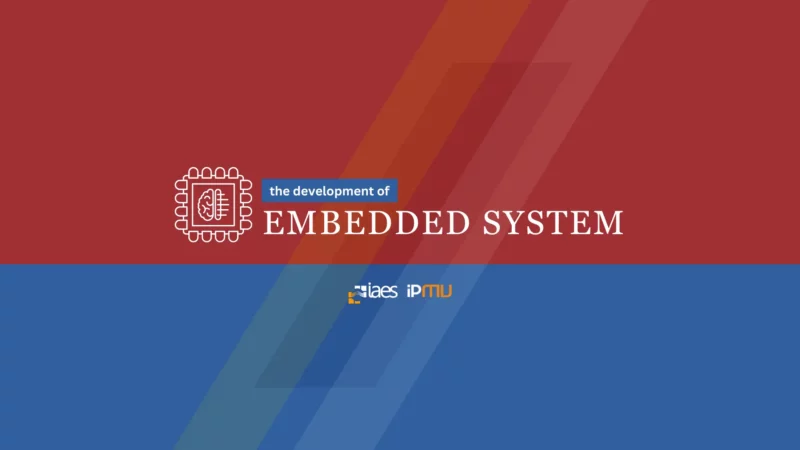Greetings, fellow Nawala! May you always be in good health.
This is the Nawala IAES of the Institute of Advanced Engineering and Science. Today we will share news about the development of embedded systems. Examples of common embedded systems include microcontrollers in home appliances, navigation systems in cars, control systems in industrial machinery, and many more. Developing an embedded system involves designing hardware and software tailored to the needs. Among the development of embedded systems is embedded micro electro mechanical systems (MEMS). MEMS is a small device that integrates mechanical and electrical components on one chip. Baghdadi et al. (2022) conducted research that discussed the reduction of pull-in voltage for the operation of MEMS devices. Pull-in voltage reduction is essential so that the operation of the device becomes safer and more reliable. Basically, the voltage reduction can help avoid premature actuation and potential damage to the MEMS device. More details regarding his research can be seen in the following article:
Features measurement analysis of pull-in voltage for embedded MEMS
Hajar Baghdadi, Mohamed Lamhamdi, Karim Rhofir
The embedded micro electro mechanical systems (MEMS) is a technology that is creating a new era in all fields and especially in the internet of things (IoT) field. MEMS are necessary components for the realization of tiny micro/nano circuits. For this reason, designers are facing many challenges in designing embedded MEMS for achieving efficient products. The pull-in voltage is one of the most important parameters of MEMS design. In this work, we are interested in the analysis of some geometrical and mechanical parameters for the pull-in. The objective is to study of the concept of pull-in voltage in order to reduce it. First, we made a simulation to choose the appropriate material achieving a lower pull-in voltage. Then, we analysed the impact of geometrical parameters on the pull-in voltage. In this work, Finite element method using COMSOL Multiphysics® software is employed to compute the Pull-in voltage and study the behaviour of the MEMS Switch in order to optimize it. Pull-in voltage can be reduced by careful selection of the cantilever material and it can be further reduced by changing the beam parameters.
In addition to the development of embedded MEMS, Kumar et al. (2022) developed an embedded sensor in their research. The research aims to automate employee-centered office activities such as authentication, notification of meeting schedules, and turning on/off computers. The results of this research provide new insight into the use of technology to automate office activities and increase employee productivity. The full article can be accessed on the following page:
Design and implementation of an automated office environment system using embedded sensors
Anil Kumar, Sanket S Naik Dessai, Shivaprasad Yadav
Office automation is the process using machines with the help of embedded computing perform the office activities and its tools and applications. The office automated using computer-aided processing stored, visual and audio data to simplify, improve, and automate the power saving and time management of the organization. A very important component of office automation concerns the automation of employee centred activities such as authentication, automatic alerting of appointments and automatic powering on/off personal computer. The employee image is captured using Java media framework, attendance records for all employees is gathered and processed automatically, and they can be accessed from the database on a monthly or weekly basis. The various software and hardware components of the system were developed and integrated to form the Exypnos Office System and validated on real life scenarios. Java proved to be a versatile platform for implementing a project of this nature with diverse requirements. Web camera interfacing and image capturing are implemented in the Java environment with the help of Java media framework (JMF). Java short message service (SMS) application programming interface (API) and Bluetooth technology is used for sending schedules through SMS. Radio frequency identification (RFID) systems use many different frequencies, but the most common and widely used and supported by our reader is 125 kHz. Office automation systems have more benefits to an organization. The project is implemented on MS Windows platform and in future can be implemented in Linux platform.
Some of the articles above are a small part of the research on the development of embedded systems. To get more information, readers can visit the International Journal of Reconfigurable and Embedded Systems (IJRES) page and read articles for FREE via the following link: https://ijres.iaescore.com/.
By: I. Busthomi

